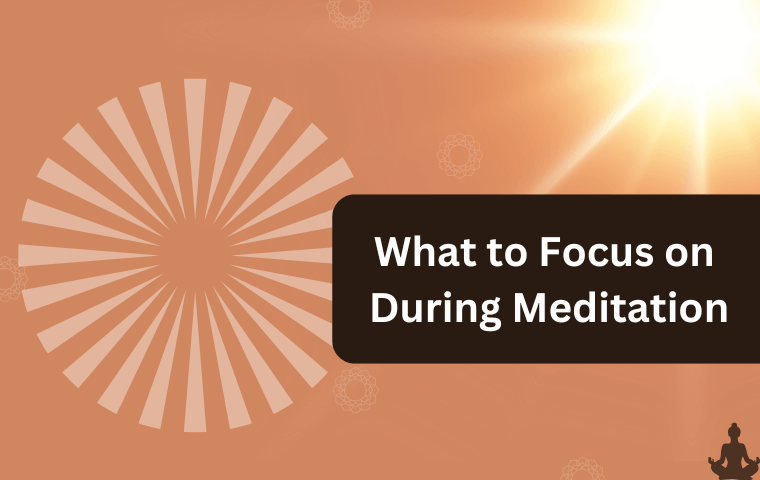Meditation helps quiet the mind and sharpen focus, but choosing a point of attention can be tricky when distractions get in the way. Here’s a guide to help you stay centered during your meditation journey.
Why Your Mind Wanders During Meditation
It’s natural for the mind to drift during meditation. Here are some common reasons:
- Wandering Thoughts: The mind produces thousands of thoughts daily, so it’s no surprise it may wander while you meditate.
- Restlessness: Physical discomfort or an overactive mind can make it hard to stay still and focused.
- External Distractions: Noises like honking cars or phone notifications can pull you away from your practice.
- Self-Judgment: Thoughts like “Am I meditating correctly?” can create unnecessary frustration.
- Perfectionism: Trying to achieve a “perfect” meditation state can make you feel discouraged.
Being aware of these challenges is the first step toward overcoming them.
The Power of a Focal Point
Having a specific focus during meditation acts like an anchor for your mind. It can:
- Deepen Mindfulness: Each time your mind drifts, and you bring it back, you train your brain to focus better.
- Improve Concentration: Over time, concentrating on a single point improves your mental clarity both during meditation and in daily life.
- Enhance Your Practice: A focal point makes meditation feel less overwhelming, especially for beginners.
10 Things to Focus On During Meditation
Meditation becomes more effective when you have a clear point of focus to anchor your attention and calm your mind. Here are ten powerful focus points to help you get started:
1. Your Breath
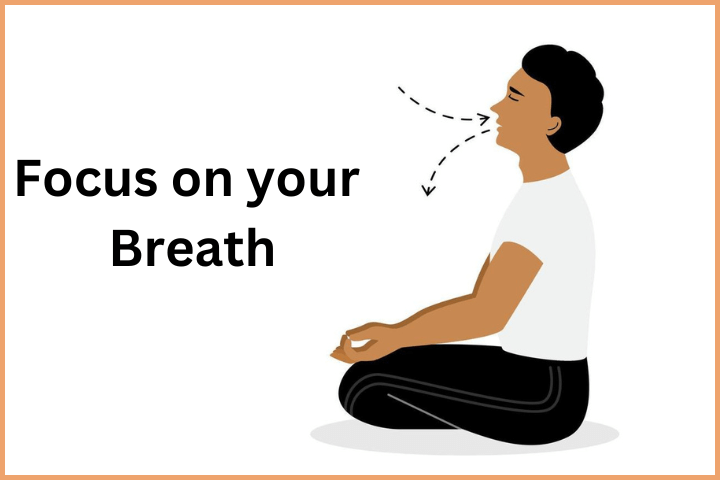
Focusing on your breath is one of the easiest and most powerful meditation techniques. Pay attention to how the air feels as it enters your nose, fills your lungs, and exits through your mouth. Pay attention to the natural flow and depth of your breath. If your thoughts drift, calmly guide your focus back to your breath. Counting each breath can also help you stay centered.
2. Body Sensations
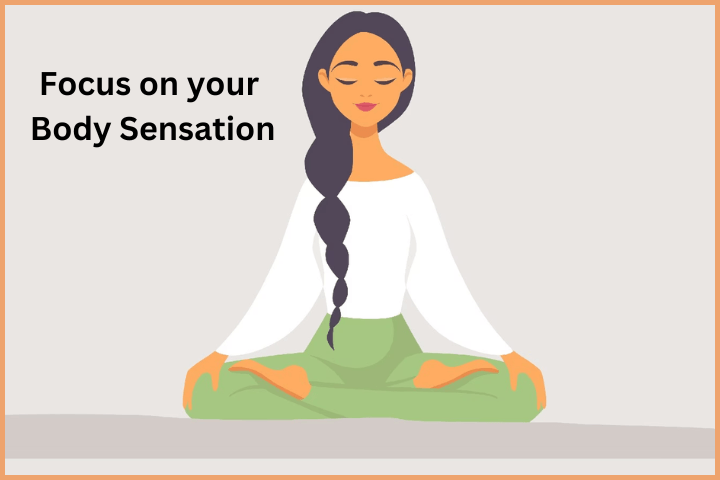
Tune into the sensations in your body. Start by feeling the weight of your body on the chair or cushion. You can also do a slow body scan, moving your focus from your toes to your head, noticing areas of tension, warmth, or tingling. This practice helps you connect with your body and stay present in the moment.
3. Positive Affirmations
Affirmations are simple, uplifting phrases that you silently repeat to yourself. Choose words like “I am calm,” “I am at peace,” or “I am strong.” These positive statements can help replace distracting thoughts and create a sense of empowerment.
4. Visualization
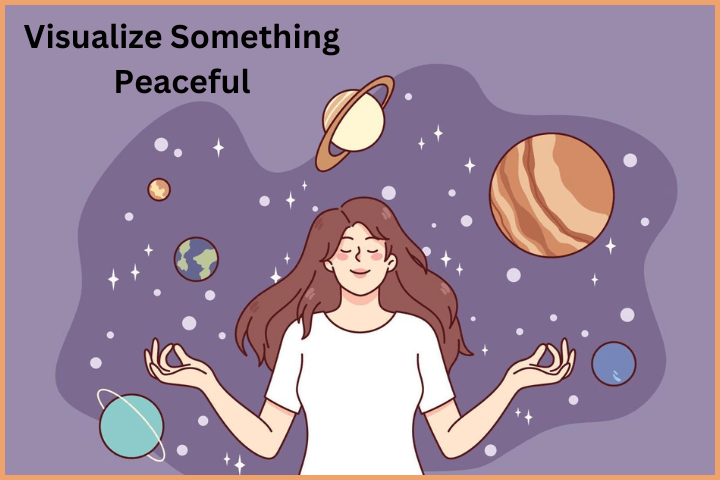
Use your imagination to visualize something peaceful, such as a quiet beach, a glowing light, or a gentle stream. Picture yourself surrounded by this calming scene, and let the image soothe your mind. Visualization makes meditation more engaging and relaxing.
5. Sounds Around You
Instead of blocking out noises, focus on them. Notice the hum of the fan, the chirping of birds, or distant traffic. Treat these sounds as part of your meditation, observing them without judgment.
6. Gratitude and Loving-Kindness
Spend time focusing on feelings of gratitude or sending loving-kindness to yourself and others. You can silently say, “May I be happy, may I be healthy, may I be safe.” Next, extend these heartfelt wishes to your loved ones, those you don’t know, and even to the whole world.
7. Walking Sensations
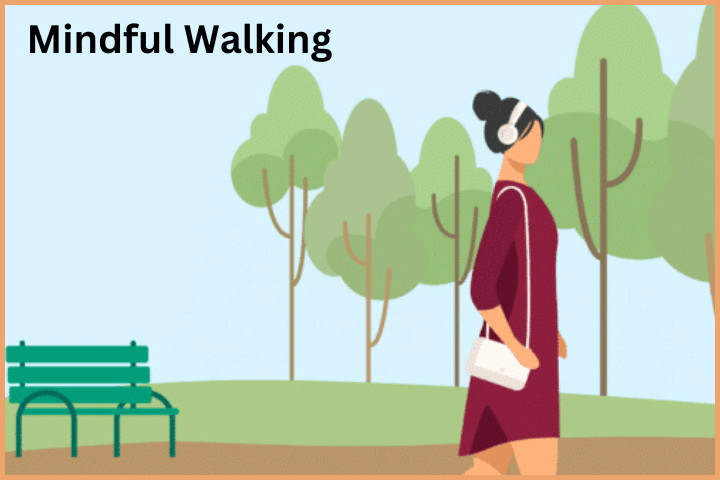
If sitting meditation feels challenging, try walking meditation. Focus on the feeling of your feet making contact with the ground and the steady rhythm of your movements. Walking meditation combines mindfulness with movement, making it an excellent option for beginners or restless minds.
8. The Present Moment
Focus on simply being in the present moment. Observe everything happening right now your breath, your surroundings, and your feelings without judgment. Let go of thoughts about the past or future.
9. Emotional Awareness
Turn your attention inward and explore your emotions. What are you feeling right now? Notice your emotions without categorizing them as “good” or “bad.” This practice helps you build emotional resilience and self-understanding.
10. Light and Space
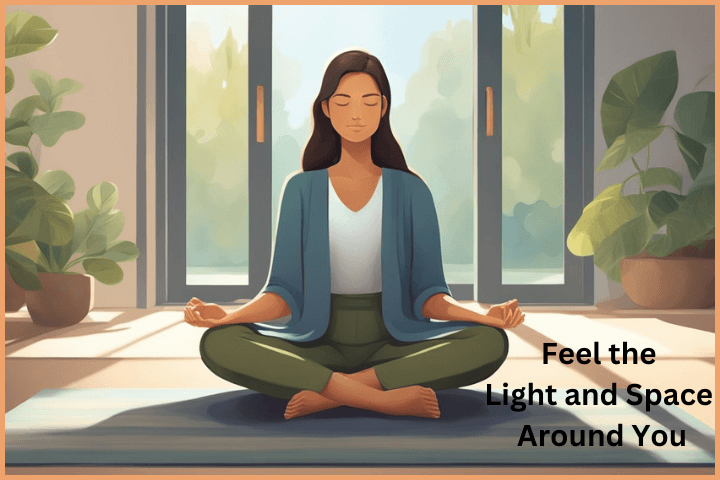
Visualize a warm, white light entering your body with each inhale and spreading calmness throughout. As you exhale, imagine stress and negativity leaving your body. You can also focus on the sense of space around and within you, feeling expansive and connected to everything.
Experiment with Different Focus Points
Everyone’s meditation journey is unique. You can try different focus points to see what works best for you. Some additional ideas include:
- Observing emotions as they arise.
- Paying attention to the sounds around you.
- Practicing gratitude by thinking about things you’re thankful for.
Remember, there’s no right or wrong way to meditate. The key is to stay patient and kind to yourself as you practice.
Final Thoughts
Meditation is about returning to the present moment again and again. Whether you focus on your breath, body, or a positive thought, the act of coming back to your focus point strengthens your practice.
Stay consistent, experiment with different techniques, and enjoy the journey of self-discovery and peace.

